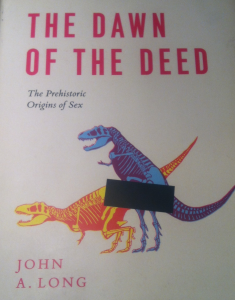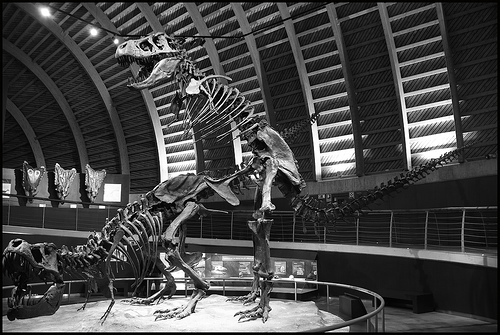First, a disclaimer. This is the kind of discussion that happens when friends talk evolutionary biology over a bottle of wine. (Specifically, me, my husband Dave–whose knowledge of evolution comes from reading New Scientist magazine — and our friend Kevin.)
Christie: Penises make no sense. They’re floppy, vulnerable appendages and males spend an inordinate amount of their lives just seeking places to poke them.
Dave: You can’t pass judgement like that. They’ve obviously outcompeted other things.
Kevin: Hey — you’re dissing a man’s most important unit.
Christie: But imagine how much more productive humans could be if we didn’t have such an urgent and time-consuming urge to copulate.
Dave: You’re looking at it from a single point in time. We think of ourselves as the endpoint of evolution, but we’re not. We’re just an evolutionary snapshot.
Christie: So you’re saying that nature might find a better solution for human reproduction?
Dave: Yeah. Thanks to technology, men can already broadcast our sperm without engaging in sex.
Christie: Like those pinyon pines whose pollen make me sneeze all spring? But that takes all the fun out of it!
Kevin: Yeah, we can’t let evolution take away the act of sex. It’s what makes us human.
Dave: I’m certainly not giving up sex. But who knows where evolution might lead.
 The genesis of our discussion? A review copy of The Dawn of the Deed that landed on my doorstep recently.
The genesis of our discussion? A review copy of The Dawn of the Deed that landed on my doorstep recently.
In the book, paleontologist John A. Long describes his discovery of a 380 million year old embryo — the first known example of internal fertilization. In the words of Long’s colleague, placoderm fish expert Gavin Young, “Gentlemen, I do believe we have just discovered the first fossil fuck.”
Long’s book recounts his accidental discovery of the first fossil evidence of copulation, and the narrative provides a riveting, yet realistic view of what it’s like to actually do science. Though Long’s account unfolds with a page-turning suspense, years passed in between the mundane work of unearthing the fossils and the eureka moments when he finally understood what these fossils were telling him. The book provides an important primer on why patience and diligence are virtues in science.
At times, the personal story teeters on self-indulgence, such as when he goes on about his 15 minutes of fame for the fish embryo discovery. But despite a few shortcomings, Long keeps readers engaged with sections such as his “crash-course primer: shark sex 101,” which explains that male sharks have claspers, “a pair of penises attached to the pelvic fins.” And if you’re wondering, “But how or why does one become utterly obsessed by shark claspers?” Long has an answer to this too. For him, “It was about finding their prehistoric origins.”
Want to know when “sex for fun” arose? According to Long, about 375 million years ago. Before that, sexual reproduction was done without all the intimate physical interaction. Even today, many fish simply spawn in water, without the need to unite male and female in the flesh.
And what about penises? The Dawn of the Deed’s final chapter discusses the evolution of male appendages. It turns out that Dave is right. Long writes, “Losing the penis altogether happened several times in vertebrate evolution…when for some reason or another an alternative reproductive strategy evolved.”
Is it possible that the increasing use of assisted reproduction could eventually make human penises obsolete? Maybe. For a definitive answer, check back in a few thousand years.
*
Dino sex photo by Maria Artigas.

One thought on “TGIPF: The Dawn of the Deed Edition”
Comments are closed.